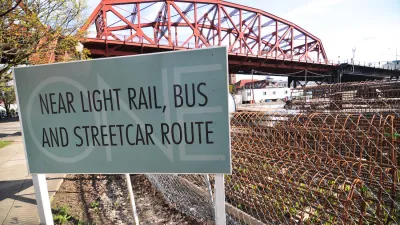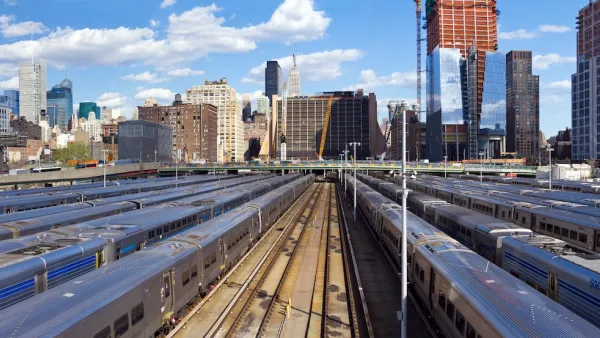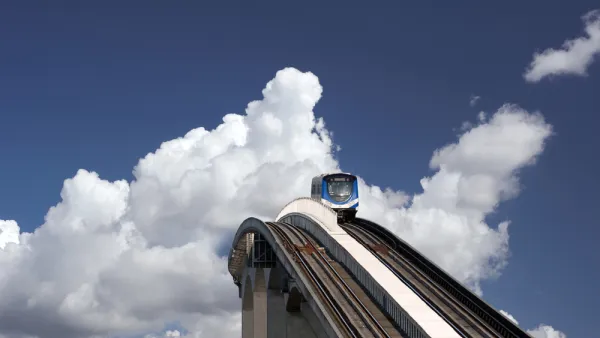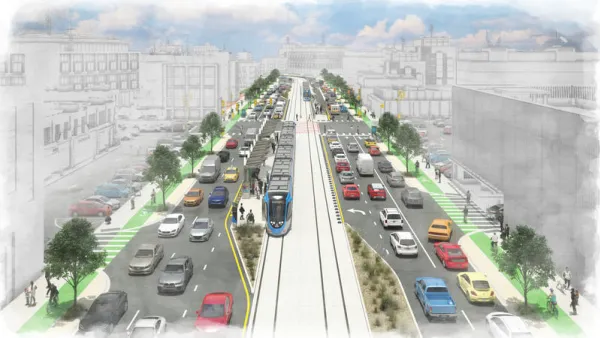From an environmental perspective, transit oriented development is hard to argue. From a socio-economic perspective, transit oriented development must make room for all income levels, according to this opinion piece posted on the NRDC website.

Jeff Turrentine writes about the connections between gentrification and public transit investments.
Things have changed. Transit-oriented development, once little more than a jargony buzz phrase uttered by urban planners and public transportation advocates, is transforming cities and suburbs all across the country as the market for housing near transit hubs continues to explode.
Unfortunately, this type of development is also changing the affordability of long-standing communities that working-class residents have called home for generations. At issue is something called transit-induced gentrification, a socioeconomic by-product of transit-oriented development that would have been largely unthinkable 25 years ago, when the idea of living above a busy train station and not owning a car held less appeal among the upwardly mobile than it does today.
Turrentine cites examples from California, in San Diego, Los Angeles, the San Francisco Bay Area, and Sacramento as evidence of the reality of transit-induced gentrification, but also finds similar concerns reported in Chicago, Atlanta, and Portland.
As a response, Turrentine argues that communitarian interests protesting transit oriented development have understandable concerns, but their actions are short-sighted.
Done right, this type of development can revitalize cities while demonstrably curbing carbon pollution by lowering automobile use. The key is in balancing these social goods with the good that comes from keeping existing communities healthy and intact—even as we set about building new ones.
So what does transit oriented development "done right" look like? Click through to the source article to read Turrentine's take.
FULL STORY: When Public Transportation Leads to Gentrification

Analysis: Cybertruck Fatality Rate Far Exceeds That of Ford Pinto
The Tesla Cybertruck was recalled seven times last year.

National Parks Layoffs Will Cause Communities to Lose Billions
Thousands of essential park workers were laid off this week, just before the busy spring break season.

Retro-silient?: America’s First “Eco-burb,” The Woodlands Turns 50
A master-planned community north of Houston offers lessons on green infrastructure and resilient design, but falls short of its founder’s lofty affordability and walkability goals.

Test News Post 1
This is a summary

Analysis: Cybertruck Fatality Rate Far Exceeds That of Ford Pinto
The Tesla Cybertruck was recalled seven times last year.

Test News Headline 46
Test for the image on the front page.
Urban Design for Planners 1: Software Tools
This six-course series explores essential urban design concepts using open source software and equips planners with the tools they need to participate fully in the urban design process.
Planning for Universal Design
Learn the tools for implementing Universal Design in planning regulations.
EMC Planning Group, Inc.
Planetizen
Planetizen
Mpact (formerly Rail~Volution)
Great Falls Development Authority, Inc.
HUDs Office of Policy Development and Research
NYU Wagner Graduate School of Public Service




























